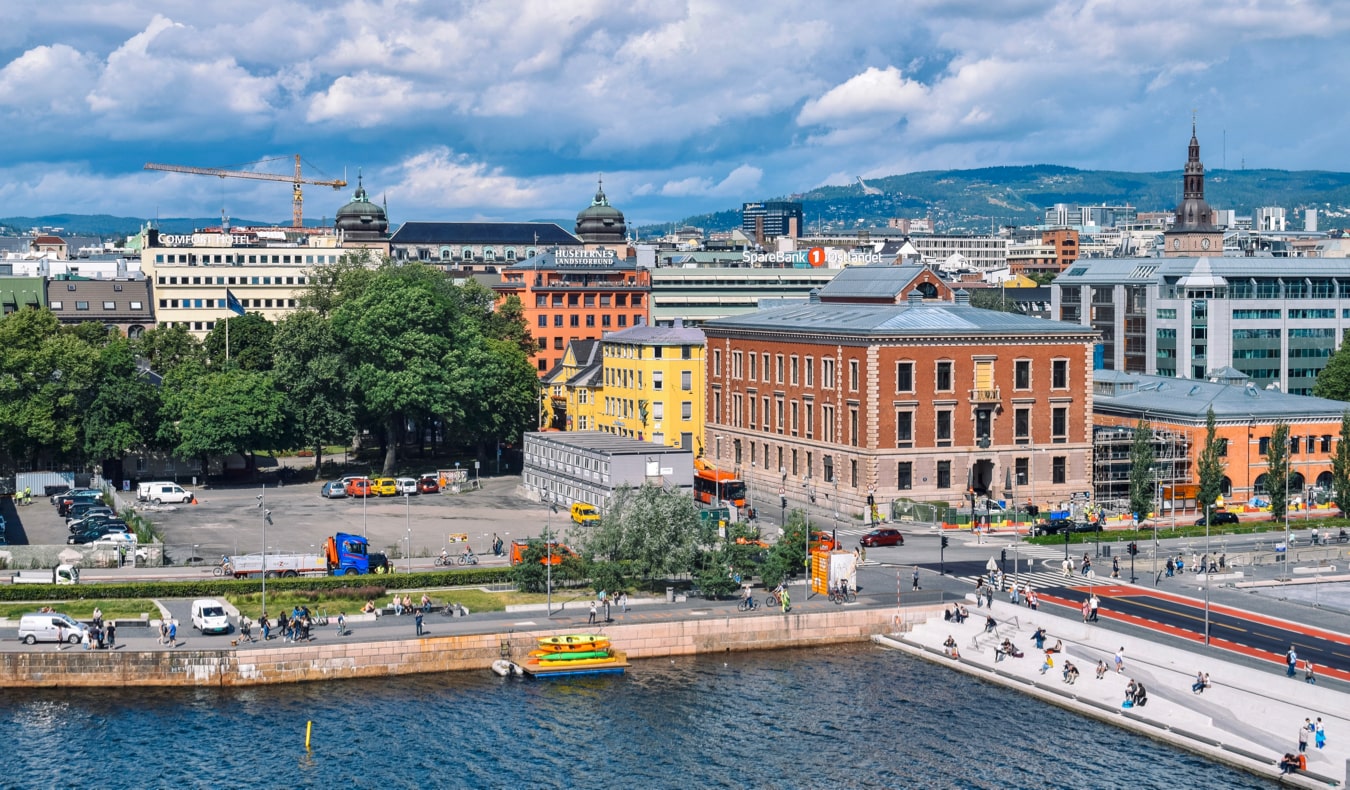
Balancing natural beauty, historic architecture, and a contemporary flair, Oslo, Norway’s beautiful capital, maybe a city that punches well above its weight. It’s small but bursting with things to do: there are countless museums, spacious parks, and delicious restaurants to stay you busy. It’s on the brink of numerous forests with hiking and biking trails, and there are many places to swim within the summer too.
However, since it’s expensive, tons of travelers pass Oslo by.
While a visit will definitely fret your budget, Oslo is certainly worth a few of days. to point out precisely why you ought to add it to your itinerary, here are my favorite things to ascertain and do there:
1. Take a Free Walking Tour
I always start my trips off with a free walking tour. They’re a budget-friendly thanks to see the most sights, learn a touch history, meet other travelers, and obtain access to an expert local guide who can answer all my questions.
Free Tour Oslo organizes daily tours that last 90 minutes and are a solid introduction to the town . confirm to tip the guide when the tour ends!
2. Enjoy the View at the opera
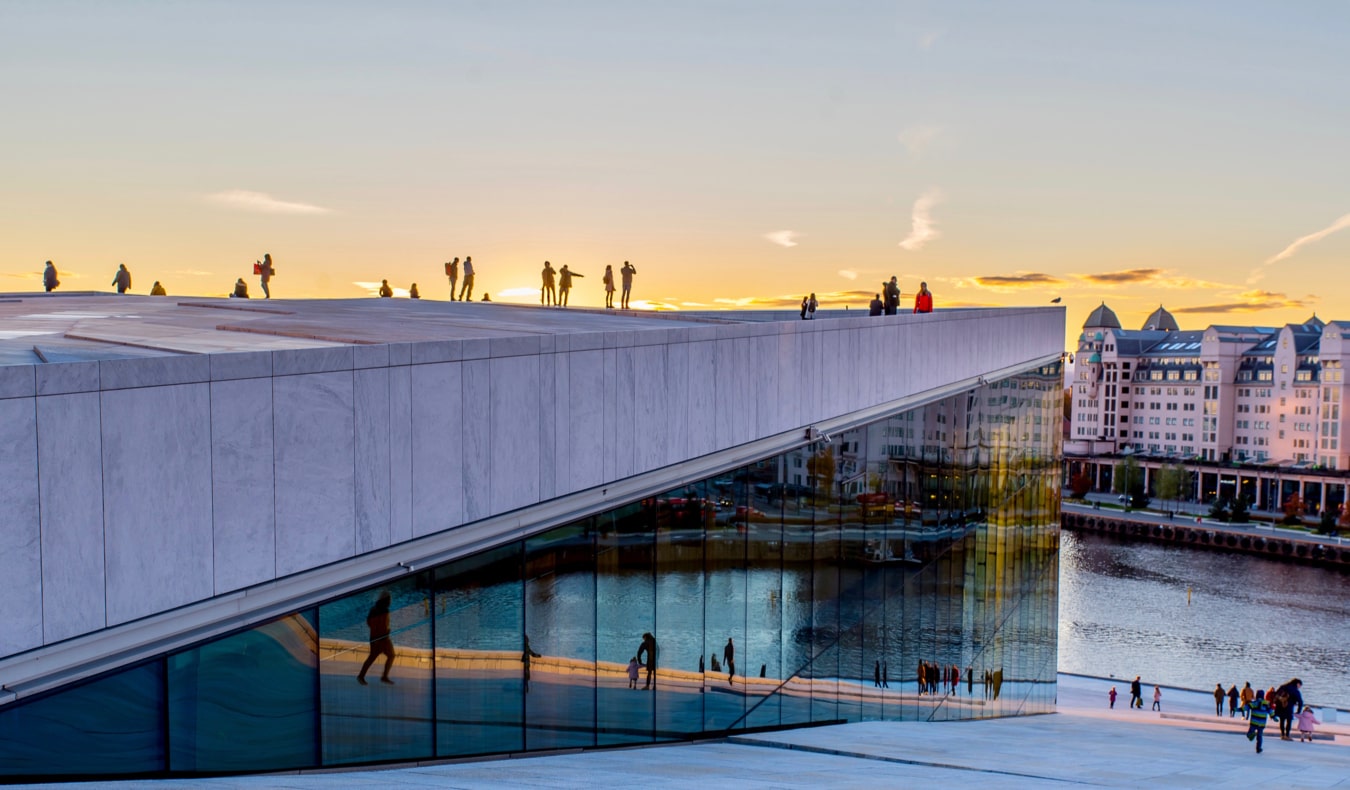
The famous Oslo opera in Norway overlooking the town at sunset
This massive contemporary theatre sits on the water and is home to the national opera and ballet. Opened in 2007, the building itself consists of multiple flat levels that essentially act as small plazas, allowing visitors to steer on the roof and luxuriate in the view of the harbor and city. It’s a well-liked spot to observe the sunset when the weather is good .
Check the website to ascertain what performances are happening during your visit.
Kirsten Flagstads Plass 1, +47 21 42 21 21, operaen.no. Open weekdays 10am–7pm, Saturdays 11am–6pm, and Sundays 12pm–6pm. Admission to performances varies.
3. See the Viking Museum

Viking Museum, Oslo
Located on Bygdøy Island, this museum is home to a number of the best-preserved Viking longships within the world. These ships, a number of which go back to the ninth century, were found around Norway. There are Viking burial ships here, also as carts and tools from the center Ages. The museum is comparatively sparse (the highlight really is that the ships), but there's also a brief film and a few other interesting tidbits of data . Download the free audio guide to form the foremost of your visit.
Huk Aveny 35, +47 22 13 52 80, khm.uio.no/besok-oss/vikingskipshuset. Open daily 9am–6pm within the summer and 10am–4pm within the winter. Admission is 120 NOK ($12.40 USD) for adults and free for teenagers under 18.
4. Explore the Vigeland Sculpture Park
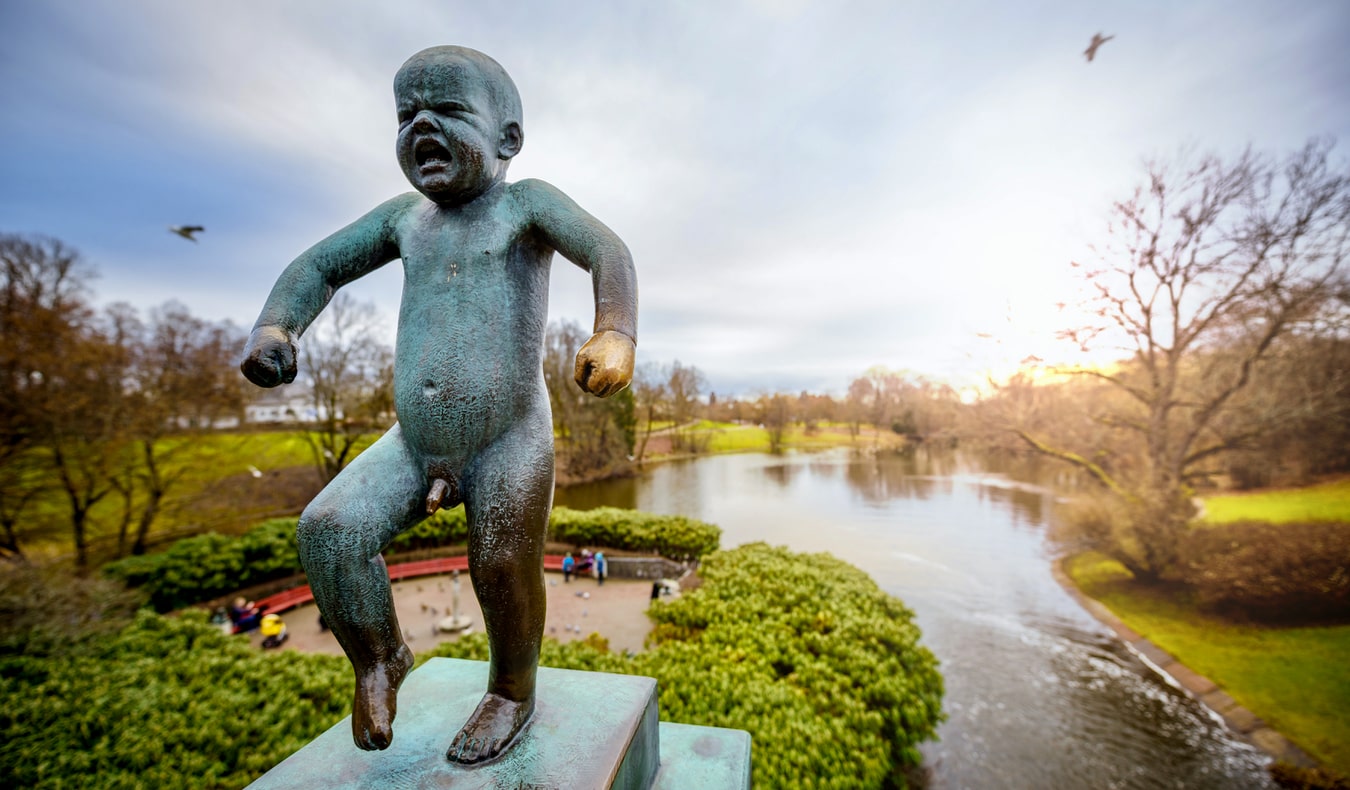
A small baby statue in Vigeland Park in Oslo, Norway
This unique collection of sculptures is found in Frogner Park. It’s the world’s largest display of sculptures created by one artist. Gustav Vigeland (1869–1943) created over 200 bronze, iron, and granite statues that now substitute the open-air “gallery” (which covers a whopping 80 acres). The crying baby statue is that the most famous. within the summer, there are often events held here also .
5. Visit the Historical Museum
This museum has many artifacts and knowledge about Norway’s past, including many Viking content. There also are exhibitions on ancient Egypt (including mummies), Africa, and therefore the country’s arctic expeditions. you'll also use your ticket to urge free entry to the Viking Museum (and vice versa) if done within 48 hours.
Frederiks gate 2, +47 22 85 19 00, khm.uio.no/besok-oss/historisk-museum. Open Tuesday-Sunday 10am–4pm. Admission is 120 NOK ($12.40 USD) for adults and free for teenagers under 18. Free on the last Saturday of every month.
6. Wander Holmenkollen
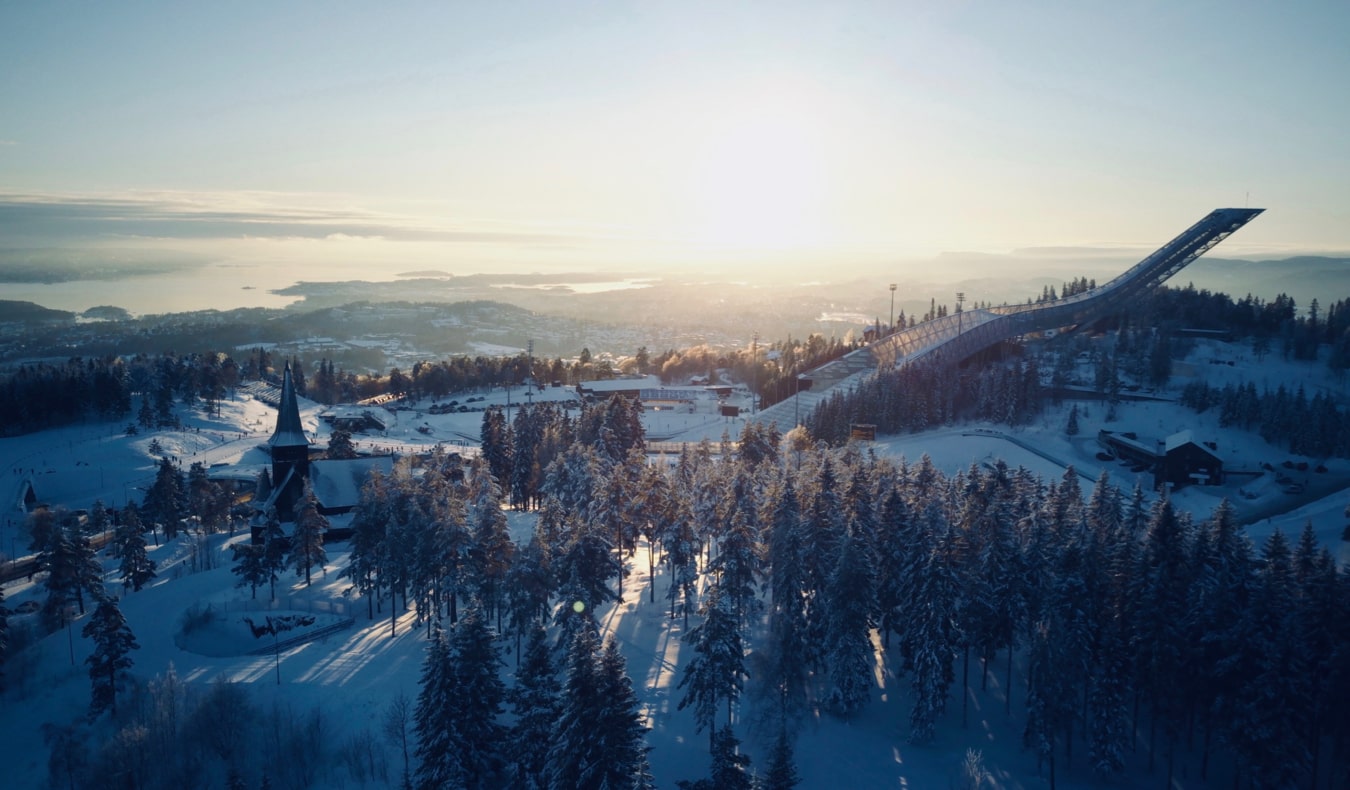
A wintery view of Oslo, Norway and therefore the old Olympic ski jump in Holmenkollen
The Holmenkollen Ski Jump are often seen from every corner of the town . If you would like to ascertain it up close, mount the subway and obtain off at the Holmenkollen stop. you'll walk up to the jump and visit the Ski Jump Museum (the oldest ski museum within the world) if you would like to find out more about this seemingly insane sport. The jump at Holmenkollen is 60 meters high, and there’s room for a few 70,000 spectators (Norwegians love their winter sports!).
From here you'll also wander into Nordmarka for a hike. It’s a forested area north of the town , with hiking, walking, and cycling trails.
7. Relax at Aker Brygge
Located near the pier, the most important concentration of restaurants in Oslo are often found here, starting from French cuisine to traditional Nordic dishes. There’s many window-shopping and architecture to admire also . The wharf has something for everybody and may be a excellent spot to spend a few of hours absorbing life within the city.
8. See the Royal Palace
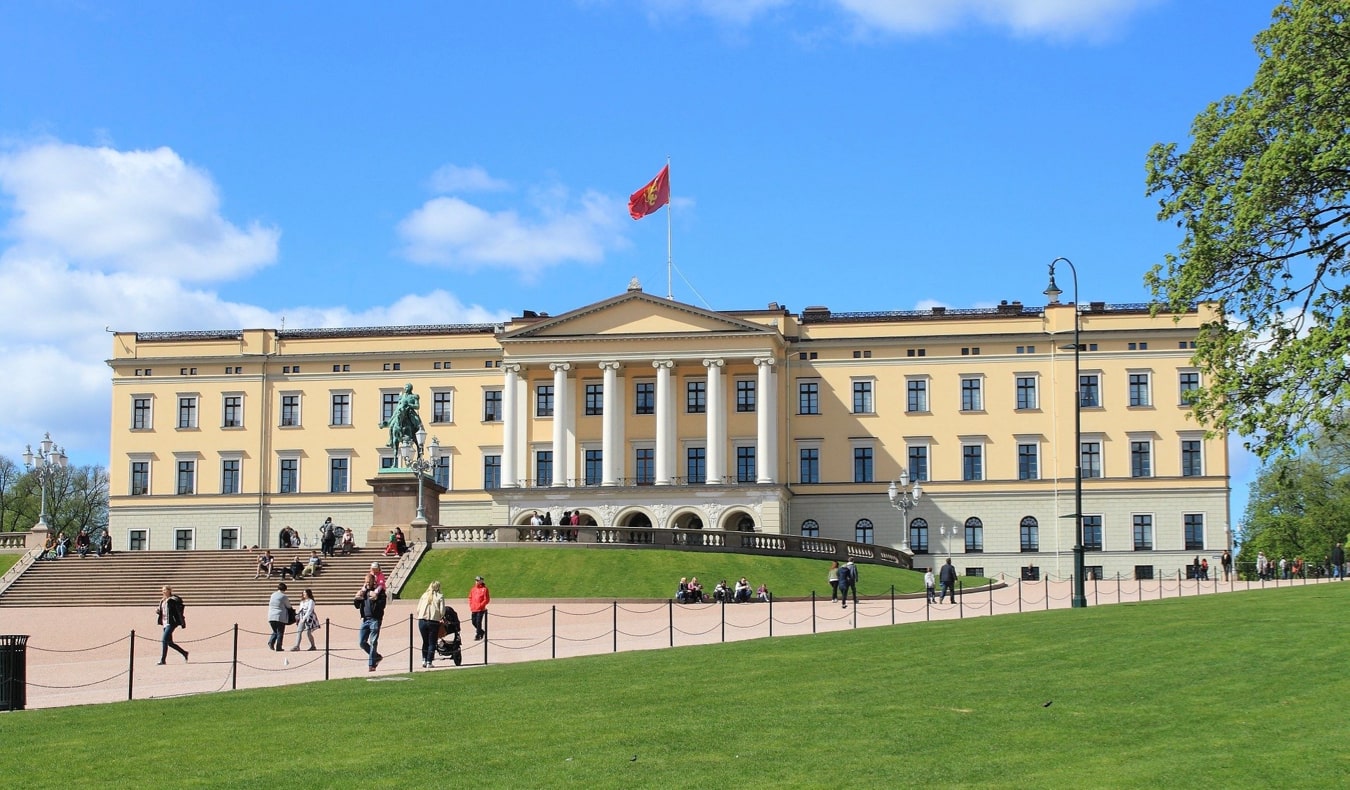
The historic Royal Palace in Oslo, Norway within the summer
The official residence of the monarch, completed within the 1840s, is surrounded by an enormous park, and locals can usually be seen in it enjoying what little sun they get throughout the year. During the summer, parts of the palace also are hospitable visitors. Tours last one hour, and you’ll be ready to see a number of the lavish historical rooms and study the monarchs who ruled Norway over the centuries.
Slottsplassen 1, +47 22 04 87 00, kongehuset.no/seksjon.html. Summer hours vary. See the web site for details. Admission is 140 NOK ($14.50 USD) and includes a tour.
9. Visit the Norwegian Folk Museum
The Norsk Folkemuseum (Norwegian Museum of Cultural History) is an open-air museum home to relocated traditional Norwegian buildings. It’s near the Viking Ship Museum (and several other museums) and showcases over 150 buildings from various periods throughout Norwegian history. the foremost stunning of its exhibitions is Gol Stave Church, an intricately carved wooden church that dates back to the 13th century. within the summer, you'll also feed animals and take carriage rides round the area.
Museumsveien 10, +47 22 12 37 00, norskfolkemuseum.no. Open daily 11am–4pm. Admission is 160 NOK ($16.50 USD).
10. Go Swimming
Oslo is surrounded by water and nature. It’s a green capital, too, with many outdoor areas that are ideal for swimming within the summer; the water is clean and safe. Tjuvholmen City Beach, Sørenga Seawater Pool, and Huk are three spots worth finding out if you’re looking to require a dip when the weather is good .
11. Visit the Fram Museum
This unique museum focuses on polar exploration, a prevalent topic in Norwegian history and culture. The centerpiece is that the Fram, the world’s first ice-breaking ship (and the last one made out of wood). In use between 1893 and 1912, the Fram made many trips to the North and South Poles and is claimed to possess sailed farther north and farther south than the other wooden ship in history. The museum is extremely detailed and offers tons of history, also as photographs, tools, and artifacts.
Bygdøynesveien 39, +47 23 28 29 50, frammuseum.no. Open daily 10am–6pm. Admission is 120 NOK ($12.40 USD).
12. study the Kon-Tiki Expedition

The famous Kon-Tiki Kon Tiki in Oslo, Norway
The Kon-Tiki Museum focuses on the works and expeditions of historian and explorer Thor Heyerdahl. employing a traditional Kon Tiki , Heyerdahl crossed the Pacific from South America to Polynesia, proving that the islands were populated from America and not Asia, as had been previously thought. The journey took 101 days and was filmed, winning an Academy Award in 1951.
The original raft are often found within the museum, along side information on Heyerdahl’s other expeditions and archeological discoveries. The journey inspired the 2012 historical drama film Kon-Tiki (which is a superb travel film).
Bygdøynesveien 36, +47 23 08 67 67, kon-tiki.no. Open daily 9:30am–6pm (shorter hours within the autumn and winter). Admission is 120 NOK ($12.40 USD).
13. Visit the Holocaust Center
The Holocaust Center focuses on the Norwegian experience of the Holocaust, highlighting the tragic fate of Norwegian Jews, also because the persecution of spiritual minorities round the world. Established in 2001, it moved from the university to the previous residence of Vidkun Quisling, a fascist who headed the Norwegian government under Nazi occupation from 1942 to 1945 (he was executed for war crimes after the war ended). the middle has all kinds of exhibitions, photos, films, artifacts, and interviews. It’s somber and sobering but worth a visit.
Huk Aveny 56, +47 23 10 62 00, hlsenteret.no. Open weekdays 9am–4pm. Admission is 70 NOK ($7.25 USD).
Kirsten Flagstads Plass 1, +47 21 42 21 21, operaen.no. Open weekdays 10am–7pm, Saturdays 11am–6pm, and Sundays 12pm–6pm. Admission to performances varies.
3. See the Viking Museum

Viking Museum, Oslo
Located on Bygdøy Island, this museum is home to a number of the best-preserved Viking longships within the world. These ships, a number of which go back to the ninth century, were found around Norway. There are Viking burial ships here, also as carts and tools from the center Ages. The museum is comparatively sparse (the highlight really is that the ships), but there's also a brief film and a few other interesting tidbits of data . Download the free audio guide to form the foremost of your visit.
Huk Aveny 35, +47 22 13 52 80, khm.uio.no/besok-oss/vikingskipshuset. Open daily 9am–6pm within the summer and 10am–4pm within the winter. Admission is 120 NOK ($12.40 USD) for adults and free for teenagers under 18.
4. Explore the Vigeland Sculpture Park

A small baby statue in Vigeland Park in Oslo, Norway
This unique collection of sculptures is found in Frogner Park. It’s the world’s largest display of sculptures created by one artist. Gustav Vigeland (1869–1943) created over 200 bronze, iron, and granite statues that now substitute the open-air “gallery” (which covers a whopping 80 acres). The crying baby statue is that the most famous. within the summer, there are often events held here also .
5. Visit the Historical Museum
This museum has many artifacts and knowledge about Norway’s past, including many Viking content. There also are exhibitions on ancient Egypt (including mummies), Africa, and therefore the country’s arctic expeditions. you'll also use your ticket to urge free entry to the Viking Museum (and vice versa) if done within 48 hours.
Frederiks gate 2, +47 22 85 19 00, khm.uio.no/besok-oss/historisk-museum. Open Tuesday-Sunday 10am–4pm. Admission is 120 NOK ($12.40 USD) for adults and free for teenagers under 18. Free on the last Saturday of every month.
6. Wander Holmenkollen

A wintery view of Oslo, Norway and therefore the old Olympic ski jump in Holmenkollen
The Holmenkollen Ski Jump are often seen from every corner of the town . If you would like to ascertain it up close, mount the subway and obtain off at the Holmenkollen stop. you'll walk up to the jump and visit the Ski Jump Museum (the oldest ski museum within the world) if you would like to find out more about this seemingly insane sport. The jump at Holmenkollen is 60 meters high, and there’s room for a few 70,000 spectators (Norwegians love their winter sports!).
From here you'll also wander into Nordmarka for a hike. It’s a forested area north of the town , with hiking, walking, and cycling trails.
7. Relax at Aker Brygge
Located near the pier, the most important concentration of restaurants in Oslo are often found here, starting from French cuisine to traditional Nordic dishes. There’s many window-shopping and architecture to admire also . The wharf has something for everybody and may be a excellent spot to spend a few of hours absorbing life within the city.
8. See the Royal Palace

The historic Royal Palace in Oslo, Norway within the summer
The official residence of the monarch, completed within the 1840s, is surrounded by an enormous park, and locals can usually be seen in it enjoying what little sun they get throughout the year. During the summer, parts of the palace also are hospitable visitors. Tours last one hour, and you’ll be ready to see a number of the lavish historical rooms and study the monarchs who ruled Norway over the centuries.
Slottsplassen 1, +47 22 04 87 00, kongehuset.no/seksjon.html. Summer hours vary. See the web site for details. Admission is 140 NOK ($14.50 USD) and includes a tour.
9. Visit the Norwegian Folk Museum
The Norsk Folkemuseum (Norwegian Museum of Cultural History) is an open-air museum home to relocated traditional Norwegian buildings. It’s near the Viking Ship Museum (and several other museums) and showcases over 150 buildings from various periods throughout Norwegian history. the foremost stunning of its exhibitions is Gol Stave Church, an intricately carved wooden church that dates back to the 13th century. within the summer, you'll also feed animals and take carriage rides round the area.
Museumsveien 10, +47 22 12 37 00, norskfolkemuseum.no. Open daily 11am–4pm. Admission is 160 NOK ($16.50 USD).
10. Go Swimming
Oslo is surrounded by water and nature. It’s a green capital, too, with many outdoor areas that are ideal for swimming within the summer; the water is clean and safe. Tjuvholmen City Beach, Sørenga Seawater Pool, and Huk are three spots worth finding out if you’re looking to require a dip when the weather is good .
11. Visit the Fram Museum
This unique museum focuses on polar exploration, a prevalent topic in Norwegian history and culture. The centerpiece is that the Fram, the world’s first ice-breaking ship (and the last one made out of wood). In use between 1893 and 1912, the Fram made many trips to the North and South Poles and is claimed to possess sailed farther north and farther south than the other wooden ship in history. The museum is extremely detailed and offers tons of history, also as photographs, tools, and artifacts.
Bygdøynesveien 39, +47 23 28 29 50, frammuseum.no. Open daily 10am–6pm. Admission is 120 NOK ($12.40 USD).
12. study the Kon-Tiki Expedition

The famous Kon-Tiki Kon Tiki in Oslo, Norway
The Kon-Tiki Museum focuses on the works and expeditions of historian and explorer Thor Heyerdahl. employing a traditional Kon Tiki , Heyerdahl crossed the Pacific from South America to Polynesia, proving that the islands were populated from America and not Asia, as had been previously thought. The journey took 101 days and was filmed, winning an Academy Award in 1951.
The original raft are often found within the museum, along side information on Heyerdahl’s other expeditions and archeological discoveries. The journey inspired the 2012 historical drama film Kon-Tiki (which is a superb travel film).
Bygdøynesveien 36, +47 23 08 67 67, kon-tiki.no. Open daily 9:30am–6pm (shorter hours within the autumn and winter). Admission is 120 NOK ($12.40 USD).
13. Visit the Holocaust Center
The Holocaust Center focuses on the Norwegian experience of the Holocaust, highlighting the tragic fate of Norwegian Jews, also because the persecution of spiritual minorities round the world. Established in 2001, it moved from the university to the previous residence of Vidkun Quisling, a fascist who headed the Norwegian government under Nazi occupation from 1942 to 1945 (he was executed for war crimes after the war ended). the middle has all kinds of exhibitions, photos, films, artifacts, and interviews. It’s somber and sobering but worth a visit.
Huk Aveny 56, +47 23 10 62 00, hlsenteret.no. Open weekdays 9am–4pm. Admission is 70 NOK ($7.25 USD).
14. See hall
Oslo’s hall is hospitable the general public and liberal to enter. While it'd not sound like a stimulating sight, the tours are literally quite informative. There are about 20 murals and works of art inside the building, covering everything from traditional Norwegian life to the Nazi occupation. You’ll also study the history of the Nobel Peace Prize, which is awarded here annually (the other Nobel Prizes are awarded in Stockholm).
15. Explore Akershus Castle

The exterior of Akershus Castle in Oslo, Norway within the summer
Originally inbuilt 1290, Akershus Castle may be a medieval fortress that later evolved into a Renaissance palace under Danish King Christian IV. it had been built both for cover and as a royal residence (currently, it’s used as an office for the prime minister). The fortress has never successfully been besieged, though it did surrender to the Nazis during war II.
Inside, you’ll find a military museum, also together dedicated to the resistance during WWII. Guided tours are available within the summer, and there are often concerts and events held here, so check the web site to ascertain if anything is happening during your visit.
+47 23 09 39 17, forsvarsbygg.no/no/festningene/finn-din-festning/akershus-festning. Open daily within the summers 10am–4pm (winter hours vary). Admission is free.
16. Go Tobogganing at Korketrekkeren
Tobogganing may be a traditional Norwegian winter activity and one you shouldn’t miss if you’re here during the winter. Stretching over 2,000 meters long, the Korketrekkeren track is fun for adults and youngsters alike. Sleds and helmets are available for rent for 150 NOK ($15.50 USD), and you rent them by the day so you'll enjoy as many rides as you wish .
17. Explore the National Gallery
The National Gallery contains Edvard Munch’s famous painting “The Scream” (which was made in 1893 and has been stolen twice). The gallery is little , but there are tons of artists on display. You’ll find some Impressionist and Dutch works, also as some by Picasso and El Greco . It’s not the foremost expansive collection, but it's still worth a visit, especially if you’re a lover of more classical art styles (like me).
The National Gallery is temporarily closed and can reopen in 2021. you'll find a number of its collection within the National Museum.
18. Get Off the Beaten Path

The She Lies sculpture in Oslo, Norway
If you’re trying to find something more quirky, here are a number of the more off-the-beaten path sights and museums the town has got to offer:
Norwegian Museum of Magic – alittle museum open only on Sundays, with many magic memorabilia and props. There’s also alittle magic performance.
The Devil of Oslo – This statue is over 900 years old and depicts a person being attacked by a lion and a dragon. It’s a neighborhood of the Oslo Cathedral (though it’s much older than the cathedral itself).
The Mini Bottle Gallery – Home to over 50,000 bottles, this quirky museum is that the only mini bottle museum within the world. The bottles are crammed with everything from food to bones to worms (and much, much more!).
Edvard Munch’s grave – Munch painted the famous “The Scream.”
She Lies – This glass and chrome steel sculpture sits call at the harbor and evokes the facility and wonder of an iceberg.
For Booking and Details:-
Travel Tips:-
Tours & activities:-
Accommodations:-
Check out Strikingly, the easiest website builder:-
Get your Joomla and WordPress hosting :-


0 Comments